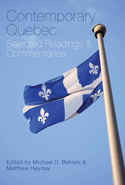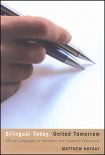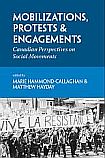Symbols Matter - Canadian Forces Edition
Symbols matter. Traditions can be invented. Nationalism is the product of collective will to create an imagined community.
All of these concepts (which are debatable, of course) are vitally important to understanding the trajectories of Canadian identity politics since the Second World War. This has been my academic stomping ground, so to speak, for the last decade or so. I was thus not particularly surprised, although I was disappointed, by the leaked announcement that the Harper Government is planning to bring back the "Royal" in the official names of the Canadian air force and navy. It fits very nicely with what Queen's history professor Ian McKay has referred to as the Right-wing reconceptualization of Canada, a rebranding of Canada's national symbols and identity markers, including the Citizenship Guide to give much higher prominence to the military and the monarchy.
The 1968 amalgamation, re-naming and re-uniforming of the Canadian Forces was an incredibly contentious issue. Coordinated by Miniser of National Defence Paul Hellyer, this break with British traditions and symbols has never sat easily with many members of the Canadian forces. Indeed, it is one of the few topics that my students, usually reservists, have requested permission to write about in my post-war history courses, despite the fact that it isn't on the list of suggested topics. To a one, these papers have taken the stance that the amalgamation of the forces was the worst thing that could have been done, a sop to French Canadians, and an attack on military morale. Clearly the culture of grievance has been passed down through the generations, given that these students were born two decades after the incident in question, and the papers tend to be based more on opinion than academic literature. I'm therefore not surprised that the Harper government has opted to make this change. It reinforces their conservative narrative of Canadian identity, and plays to their electoral base, particularly their older supporters. Personally, I see it as a retrograde move, one which further reinforces a connection to the monarchy, a hereditary institution whose time I believe has passed.
If you're particularly interested in learning more about the amalgamation and re-naming of the Canadian forces, the backlash it engendered, and how it is lamented by more conservatively-oriented academics, you might want to take a look at The Strange Demise of British Canada: The Liberals and Canadian Nationalism, 1964-68 by C.P. (Chris) Champion. Champion has been an advisor to the Conservative government on its citizenship and heritage policies, and his book has been endorsed by a who's who on the Canadian academic (and populist) right. If you want to know what sort of intellectual thinking is fuelling this re-branding and conservatizing of Canadian symbols, it's not a bad place to start.
Of course, given my own recent research projects, I wonder how long it will be until we see a return of Dominion Day!
Labels: C.P. Champion, Canadian forces, citizenship, Conservative, national identity, nationalism, royal canadian air force, royal canadian navy, Stephen Harper, symbols
Recommend this Post





4 Comments:
I'm just wondering how long it will take for Harper to change his title from "Prime Minister" to "King". Or will he just go back to the old practice of receiving a knighthood?
Interesting, my husband who is British born but Canadian citizen now, is thoroughly disgusted. Of course he is from the working class and has no use for the "Royals" in all their privilege.
And I'm not sure if Canadians really cared, as it sure wasn't an election issue or brought up during the campaign. Maybe back in 1968, but this is 2011, and those WW2 vets are mostly gone. I know, my dad died 2 years ago at age 90, so me thinks it was a very very "special interest group" who had the ear of the Cons. But I'm thinking this is more so about using a divisive tactic against the official opposition with all their Quebec MPs. And using the "Royal" crap for divide and conquer. Disgusting to say the least.
On the contrary. By restoring the "Royal" title, Harper demonstrates that he is not the king, that Canada has a monarch, the Queen, and that he is merely her prime minister. A "Royal" institution transcends quotidian politicians. That's the point.
Matthew, I am sure you jest about Dominion Day, but Harper once had a Private Member's Bill that proposed to do just that: http://www.parl.gc.ca/content/hoc/Bills/352/Private/C-365/C-365_1/C-365_1.pdf
Just watch him.
Post a Comment
<< Home